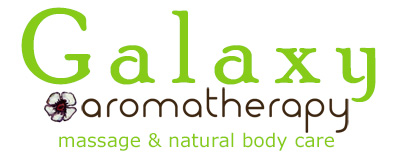German chamomile essential oil is steam distilled from the dried flowers of a fragrant, low annual herb with delicate feather leaves and daisy-like white flowers on a single stem, which grows up to 0.6m tall. A deep inky blue colour, German chamomile essential oil has a strong, herbaceous, warm, sweet aroma, and is slightly viscous. The beautiful blue colour is a side-effect of steam distillation, which turns the chemical constituent matricin into chamazulene, turning it blue. Chamomile flowers have been used for a very long time internally for digestive disorders, and externally for irritation of the skin and mucuous membranes. As many sources refer only to 'chamomile', it is unclear which species were used. German chamomile flowers are extensively used as a herbal tea, and the oil is used in cosmetics.
German chamomile's main actions are as an anti-allergenic, anti-inflammatory, antispasmodic, analgesic and vulnerary. *See below for meanings.
For children, the chamomiles are renowned to be gentle, calming and soothing - Roman chamomile is known as 'the children's oil', but German chamomile is more soothing for nappy rash.
German chamomile essential oil can be used to treat coloc, dyspepsia and indigestion (use in conjunction with the herb). It stimulates the liver and gall bladder, is helpful for poor appetite and slow, painful digestion, and is also a good choice for inflammation in the bowel.
For the immune system, it has an ability to neutralise toxic bacterial metabolic wastes, which are often the cause of fever during acute illness. To help immunity in cancer patients, 1% German chamomile in a massage oil is thought to be beneficial.
For the respiratory system, German chamomile is incredibly soothing for conditions requiring gentle soothing of inflammation, such as hay fever and sinusitis.
It's also wonderful for the skin - it benefits dry, mature, wrinkled skin, is incredibly soothing for sensitive, irritated and/or itchy skin, making it very useful for eczema, dermatitis, psoriasis, urticaria and nappy rash. It is helpful for acne, boils, burns and slow to heal wounds such as open leg sores, abscesses and infected ingrown nails. As a local vasoconstrictor, it can reduce redness in cheeks due to enlarged capillaries. This is one of my 'go to' oils for irritations, rashes, bites and itches, and quite simply, I wouldn't be without it.
While German chamomile is beneficial for muscular aches and pains, Roman chamomile, due to a lower price tag and effectiveness, is a better choice.
For the female reproductive system, German chamomile essential oil promotes and harmonises menstruation, and is also beneficial for spasmodic dysmenorrhoea and PMS leading to anxiety, tension, insomnia and irritability.
It soothes the nerves much as it soothes the skin and digestive system, easing stress and frustration, and is helpful for neuralgia and headaches.
German chamomile is particularly useful for urinary tract infections such as cystitis. It is recommended to drink chamomile tea and have compresses and massage over the lower abdomen with the oil, which should also be used in a bath.
German chamomile brings strength and depth of emotion, and helps to bring out the best in us. It encourages us to be more dow-to-earth and up-front, and provides support, like a shoulder to cry on in emotional storms or during grief. It can be used to counteract agitation or over-activity in the chakras, and can be used to heal the aura wherever heat, redness or anger are present.
German chamomile blends well with citrus and floral oils (especially neroli), lavender and base notes such as patchouli, sandalwood and cedarwood.
Non-toxic, non-irritating and non-sensitising. Safe for use during pregnancy.
For free qualified advice on how to use it, email info@GalaxyAromatherapy.com.
Always take care when choosing your essential oils. Look for botanical names and expiry dates on the label. They should come in dark coloured glass bottles to protect them, and have dripulator tops. Following these guidelines will help to ensure you're buying good quality, pure essential oils.
Terms:
analgesic - relieves or diminishes pain
anti-allergenic - reduces the symptoms of allergies
anti-inflammatory -alleviates inflammation
antispasmodic - prevents and eases spasms and relieves cramps
vulnerary - prevents tissue degeneration and promotes the healing of wounds
Is there an essential oil not already profiled you’d like to read about? Contact us with your request.
